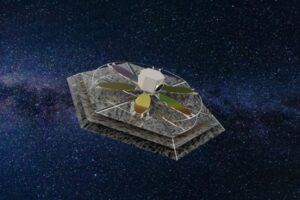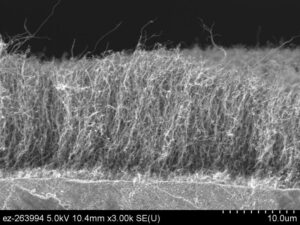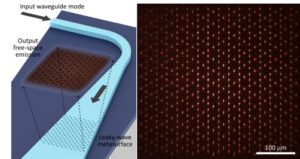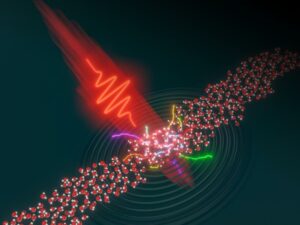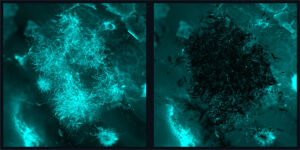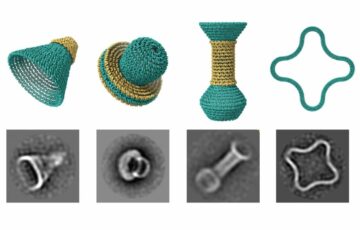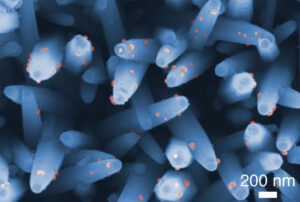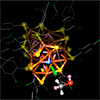| Jan 30, 2024 |
|
|
|
(Nanowerk News) Researchers at the University of Kansas hope to better understand intricate mechanisms behind the evolution of galaxies, which travel through a “cosmic web” of different environments during their lifespans.
|
|
Gregory Rudnick, professor of physics & astronomy at KU, is leading a team that recently earned a $375,000 grant from the National Science Foundation to study “gas content and star-formation properties of galaxies” that are altered depending on where they are moving through the cosmos.
|
|
“The primary objective of this project is to comprehend the impact of environmental factors on the transformation of galaxies,” Rudnick said. “In the universe, galaxies are spread in a non-uniform distribution characterized by varying densities. These galaxies aggregate into large clusters, comprising hundreds to thousands of galaxies, as well as smaller groups, consisting of tens to hundreds of galaxies.”
|
|
Additionally, galaxies can be part of elongated filamentary structures or they can reside in an isolated state in lower density regions of the universe, he said.
|
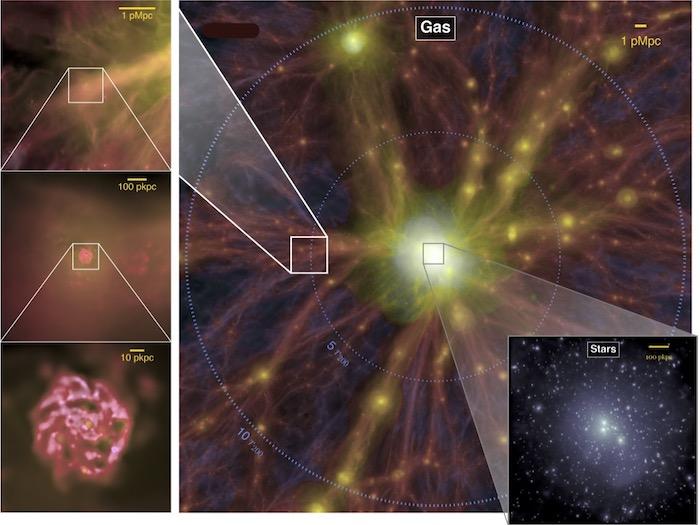 |
| A computer simulation of what the gas and stars in a galaxy cluster look like, highlighting how clusters of galaxies are embedded in cosmic web of filaments. In the color images, the intensity and color of the image represent the density and temperature of the gas. These figures show successive zooms onto a galaxy embedded in a filament. Going counterclockwise from the top right, the scale bars represent lengths of 3.3 million light years, 3.3 million light years, 330 thousand light years, 33 thousand light years. The image at lower right shows the stars in the galaxies in this simulated cluster, with the scale bar corresponding to 330 thousand light years. The WISESize program will use observations to measure the spatial distribution of gas and stars in galaxies as they move through the cosmic web that permeates the nearby universe. By comparing to simulations such as those shown here, Rudnick and collaborators will be able to determine how the cosmic web alters galaxies. (Image: Yannick Bahé)
|
|
Previous efforts focused mostly on comparing galaxies in clusters and groups to those in the lowest density regions of the universe, called “the field.” These studies neglected the highway of filaments that connect the densest regions. Rudnick’s team will consider the full dynamic range of densities in the universe by focusing on how galaxies react to the environment in filaments that channel them toward galactic groups and into galaxy clusters, altering the evolution of galaxies along the way.
|
|
“Galaxies follow a path into these filaments, experiencing a dense environment for the first time before progressing into groups and clusters,” Rudnick said. “Studying galaxies in filaments allows us to examine the initial encounters of galaxies with dense environments. The majority of galaxies entering the ‘urban centers’ of clusters do so along these ‘superhighways,’ with only a minimal number taking rural routes that bring them into the clusters and groups without interacting much with their surroundings. Whereas filaments are akin to interstate highways, these less-traveled routes into dense regions are akin to the analogy of driving on rural roads in Kansas to access city limits. Galaxies can exist in filaments or be in groups that reside in filaments like beads on a string. Indeed, most galaxies in the universe exist within groups. Therefore, with our study we will simultaneously gain insights into both the onset of environmental effects on galaxies and into how galaxies behave in the regions where they are most commonly found, filaments and groups.”
|
|
A key focus of study will be how conditions within these filaments, fields, groups and clusters of galaxies alter the “baryon cycle” of gases within and around galaxies. Each cosmic neighborhood changes how the gas behaves in and around galaxies and can even affect the densest molecular gas from which stars form. Disruptions of this baryon cycle can therefore either boost or hinder new star production. Recently, a federal report by the astronomical community to establish astronomical research goals for the 2020s — the Astro2020 Decadal survey — named understanding the baryon cycle a key science topic for the coming decade.
|
|
“The space between galaxies contains gas. Indeed, most of the atoms in the universe are in this gas, and that gas can accrete onto the galaxies,” Rudnick said. “This intergalactic gas undergoes a transformation into stars, although the efficiency of this process is relatively low, with only a small percentage contributing to star formation. The majority is expelled in the form of large winds. Some of these winds exit into space, termed outflows, while others are recycled and return. This continuous cycle of accretion, recycling and outflows is referred to as the baryon cycle. Galaxies can be conceptualized as baryon processing engines, drawing gas from the intergalactic medium and converting some of it into stars. Stars, in turn, go supernova, producing heavier elements. Part of the gas is blown out into space, forming a galactic fountain that eventually falls back to the galaxy.”
|
|
However, Rudnick said when galaxies encounter a dense environment, they can experience a pressure caused by their passage through the surrounding gas and this pressure can in turn disrupt the baryon cycle either by actively removing gas from the galaxy or by depriving the galaxy of its future gas supply. Indeed, in the centers of clusters, galaxies can find their star-making power quenched as their gas supply is removed.
|
|
“The disruption affects the intake and expulsion of gas by galaxies, leading to alterations in their star formation processes,” he said. “While there may be a temporary increase in star formation, in nearly all cases, it eventually results in a decline in star formation.”
|
|
Rudnick’s collaborators at KU will include graduate students like Kim Conger, whose work helped shape the grant proposal, along with undergraduate researchers. His co-primary investigator Rose Finn, professor of physics and astronomy at Siena College, will also employ and train students.
|
|
The researchers will use astronomical datasets like DESI Legacy Survey, WISE and GALEX imaging of around 14,000 galaxies. Additional new observations will be carried out by personnel at both campuses using Siena’s 0.7-m Planewave telescope to obtain new imaging of galaxies equipped with a custom filter to be purchased via the grant. KU students will be able to observe remotely with the Siena telescope, as they have already through a joint Observational Astronomy course in 2021 and 2023.
|
- SEO Powered Content & PR Distribution. Get Amplified Today.
- PlatoData.Network Vertical Generative Ai. Empower Yourself. Access Here.
- PlatoAiStream. Web3 Intelligence. Knowledge Amplified. Access Here.
- PlatoESG. Carbon, CleanTech, Energy, Environment, Solar, Waste Management. Access Here.
- PlatoHealth. Biotech and Clinical Trials Intelligence. Access Here.
- Source: https://www.nanowerk.com/news2/space/newsid=64545.php


